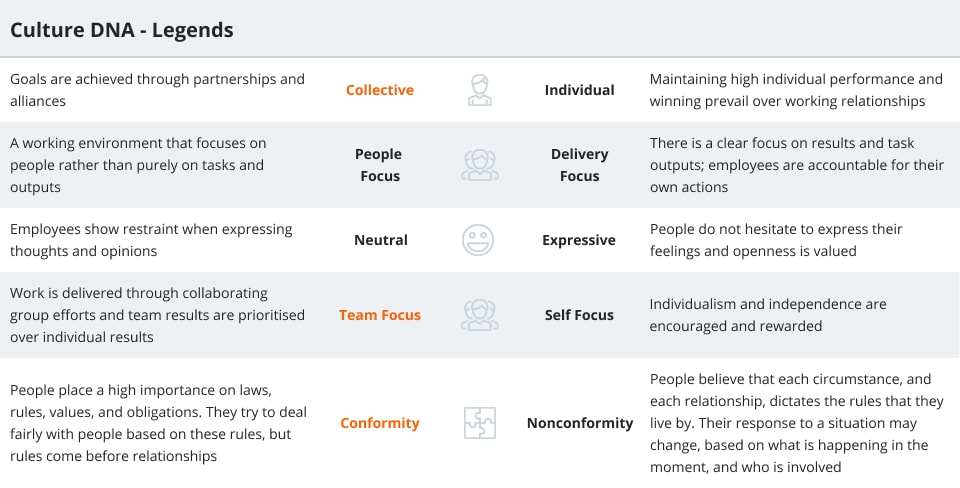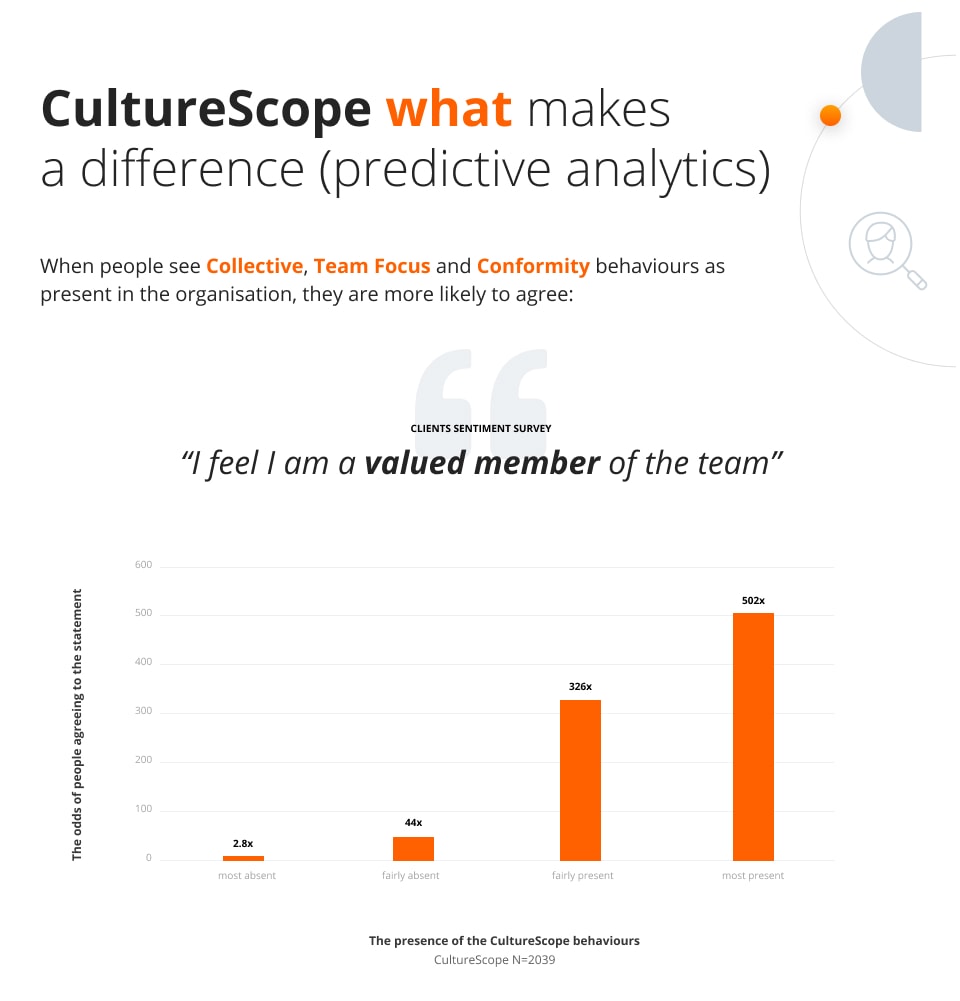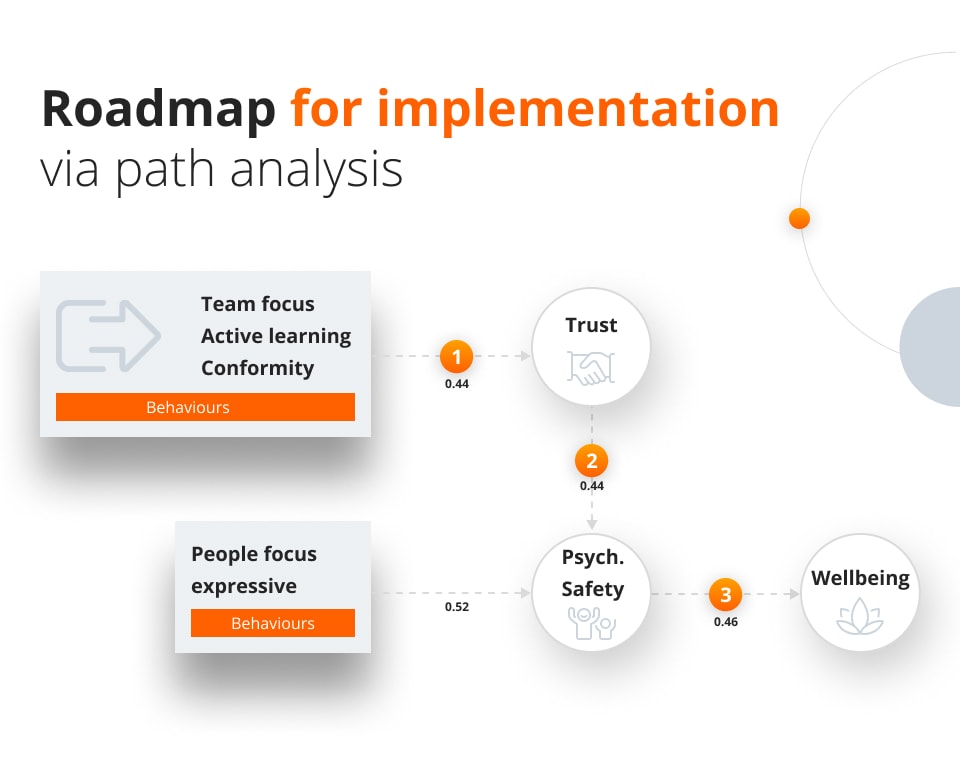
Cracking the company’s culture code – measuring the (almost) immeasurable
The focus on culture is shifting rapidly and with it, the science of understanding it. Developing the right culture presents a unique challenge for management teams. While its importance is rarely disputed, efforts are often hampered by the methods used to assess it.
The current focus on organisational culture is being driven by a combination of challenges – regulatory, financial and social.
We are all too aware of the cultural scandals that have dogged specific sectors or companies. Regulators have been increasingly focused on efforts by organisations to ensure their culture reflects their purpose and values and delivers their strategy. That regulatory focus has broadened in recent years as the market is valuing companies who build sustainable performance with strong Environmental, Social and Governance (ESG) ratings. Organisational culture is central to that effort.
And then there is a broader context of social change.
COVID-19 has brought a huge and permanent change in the world of work. Remember the time before ZOOM and MS Teams, before meetings could be interrupted by children, dogs and deliveries. Our experience and expectations of work have changed and organisations are having to respond in different ways. What sustained a culture in the past, may not be what sustains it tomorrow.
Add to this the battle for talent, changing societal expectations on issues of inclusion, diversity and equality as well as a multi-generational workforce.
These challenges all make understanding and building a healthy organisational culture a critical topic for management teams and their boards.
The challenge of measurement
Despite these pressures, efforts to assess culture to the level at which it can be managed as effectively as other strategic levers has been mixed.
The standard approach involves the triangulation of a range of lagging indicators. While they can handily be captured on a dashboard, they are generally not built for the task and often miss the fact that this is a complex system with multiple inputs and outcomes.
Without the empirical evidence, gut feel and assumption play a strong role in diagnosis. The more vague the diagnosis, the more wide-ranging the prescription. The Aspirin of culture change is often a costly transformational culture change programme.
At the heart of this measurement challenge lies an over-reliance on existing tools like sentiment surveys that are just not built for the job. Understanding employee sentiment via a regular survey is important for any business, but there are real challenges in using this as a proxy for an understanding of culture.
First, is response bias – anyone completing the survey knows the answer the organisation wants them to give and that can colour their response, especially in certain cultures. Second, even if it was your true feeling, does it translate to what you would actually do in a given situation?
To illustrate – when I was a regular traveller, there were certain airlines I promised ‘I just wouldn’t travel on ever again!’ If I was asked in a survey today to put a cross beside those I do or don’t like, I would happily make my mark. Tomorrow, when I then come to book a flight and am faced with paying either £30 or £300 how I felt then probably doesn’t come into it. Sentiment data is useful in telling how you felt yesterday. It doesn’t predict what you will do tomorrow.
While combining sentiment data with qualitative insights and key outcome will improve the picture – it often serves to add greater complexity and even more reliance on assumptions. For an issue that is becoming so important, can’t we be a bit more definite? Is there another way?
A common language of behaviour
Behaviours are the clearest expression of culture – behaviour drives culture and culture reinforces behaviour. When I think about cultures I’ve been part of, I often reflect on those little moments. Was I more or less likely to cc. people into emails when I worked for company Y or when I worked for company X? When I was part of Team A – we always started meetings with a social chat, ‘What did you get up to at the weekend?’ When I was part of Team B, we started with the agenda. They all tell a story of the context in which we play out our working lives.
We all have our own behavioural preferences. Some of us value working by collaborating in a team and love the collective endeavour, others prefer to work alone seeking value in their individual effort. Some are incredibly task focused and focused on results, others prefer a greater focus on the people in achieving results.
The cultures in which we work ALSO display these preferences. We see it in how those around us behave and in what the organisation values. That IS culture. Developing a framework that can describe and compare both individual and organisational behaviour has been central to our work at iPsychTec.
Shifting the focus of measurement to understanding the relationship between them is at the heart of cracking the culture code.
Connecting behaviours to outcomes
I am sure we have all experienced what we believe to be ‘good’ and ‘bad’ cultures but what are they good and bad for?
There is little point in having a debate about what you want your culture to be, without thinking about ‘why’. Do you seek to be innovative, be more inclusive or risk aware? The question any culture assessment should be asking is which of these behaviours drive the outcomes we want and vice versa?
Advances in behavioural science and data analytics now make this possible by connecting behaviour at the individual and organisational level to those outcomes and doing so at scale.
Where certain outcomes are achieved, we can look at the behaviours (both personal and organisational) that drive them OR we can look at which specific behaviours (values or cultural aspirations) drive which outcomes.
This opens up new possibilities for directing action in a much more efficient way.
Research we’ve done at iPsychTec with one client we found three behaviours were significant drivers of inclusion. Using regression analysis, showed those colleagues who were experiencing those behaviours in the organisation were (exactly) 502x more likely to feel a valued member of the team than those who weren’t. These weren’t behaviours that the organisation had identified.
Providing your own pathway for change
One of benefits of creating a common language of behaviour and connecting it to outcomes is that we can look at multiple relationships between behaviours and outcomes to find the best route for change.
One client we’ve worked with wanted to build greater trust, enable colleagues to contribute and speak up through stronger psychological safety and to build better well-being. We identified 5 behaviours that underpinned these outcomes – but where to start?
By using this path analysis, we identified three behaviours we knew would build trust and then, once that outcome had improved, the two behaviours that would build psychological safety. The key here is that by taking this staged approach they would also achieve their wellbeing outcome for free without further money spent on another big programme.
Every culture is different with its own history and each presents its unique challenges. The approach for one is not the same as for another, even if they have a similar outcome in mind. It is often why ‘cookie-cutter’ solutions to culture change so often fail. And, while it is all ultimately about human relationships and human behaviour, data and behavioural science is helping us find some interesting answers.
__________________________________
ABOUT THE AUTHOR
Adam Smith is Culture & Behavioural Insights Manager at iPsychTec.
He is an organisational development professional focused on organisational culture and behavioural insights, communication, leadership development and team effectiveness.
iPsychTec’s tool CultureScope combines the best elements of scientific and applied research to develop and deploy behavioural diagnostic and predictive analytical tools to help organisations achieve their mission. It is a ground-breaking, scientifically validated approach to behavioural and cultural measurement.
Based on the largest ever behavioural research study over a 7-year period, it quantifies the culture of an organisation using revolutionary diagnostics. By assessing individual and organisational behaviours (how do I behave and what do I observe around me) and linking these with organisations’ outcomes it provides predictive analytics, actionable insights and a road map to drive the organisation forward, reducing risk, improve performance and building resilience.








